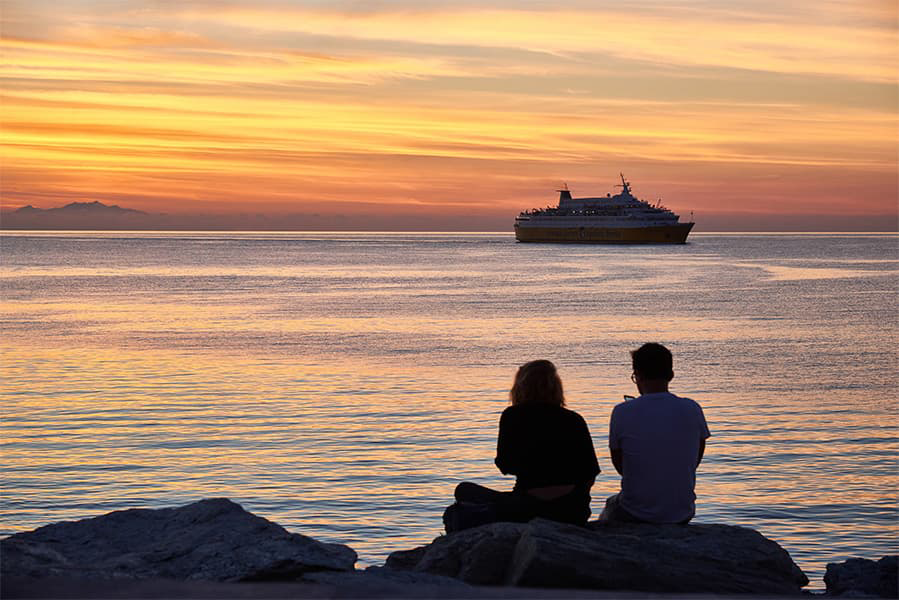Ferries from
Spain to Gran Canaria
Ferries from
Spain to Gran Canaria


The crossing time of the Spain to Gran Canaria ferry ranges between routes, operators and ships. The Cadiz Las Palmas ferry on average approximately takes 13 hours and 30 minutes. The distance from Cadiz to Las Palmas is approximately 624 nautical miles. The fastest ferry from Spain to Gran Canaria is from Huelva to Las Palmas, with a crossing time of approximately 8 hours and 30 minutes. Naviera Armas and Fred Olsen Express provide this route with up to 4 sailings weekly combined.
| From | To | Average price | |
|---|---|---|---|
From CadizSpain |
To Las PalmasGran Canaria |
Average price$661.23 | |
From HuelvaSpain |
To Las PalmasGran Canaria |
Average price$656.69 |
More routes than anyone else.

Compare fares, times & routes in one place.
Change plans easily with flexi tickets.

Book e-tickets & manage trips in-app.
Live ship tracking & real-time updates.

Top-rated customer support when you need it.
Spain is a country located on the Iberian Peninsula and bordered by Portugal to the west, France to the north-east and the Mediterranean Sea to the South and East. The marvellous weather in Spain, its geographic location, beautiful coastlines and varied landscapes have made Spain one of the most popular destinations in the world. Its capital city Madrid features winding streets all heading to gather in the center of the city, Barcelona needs no introduction, the Basque country is to the North and then of course there’s the sunbathers mecca – the Costa del Sol. As a country with thousands of miles of coast and numerous island groups such as the Canaries and Balearic's, travelling by ferry is deeply rooted into Spanish culture. Europe’s most modern ferries and well-known ferry companies are in operation providing services from Spain to the UK, Italy and North Africa as well as crossing from the mainland to the Canary Islands, the Balearic Islands and numerous inter island connections.
Gran Canaria is one of the main tourist destinations in the Canary Islands thanks to its exceptional beaches and promise of a warm and dry climate all year round. Home to around 838,000 people, it is the second most populated isle in the archipelago after nearby Tenerife and, while it is located in the Atlantic Ocean close to Africa, it is undoubtedly a Spanish island. While it has a thriving business sector in its capital city Las Palmas, Gran Canaria's main industry is tourism, with British, German and Scandinavians making up the largest proportion of visitors. There are currently 2 direct routes from mainland Spain to Gran Canaria Island sailing from the southern Spanish ports of Cadiz and Huelva. Due to the distance between the mainland and the Canaries, crossings are not overly frequent and are generally long in duration. The ships used on these crossings are usually of a high standard though so a pleasant time at sea is likely. Most of the ferries arriving in Gran Canaria are travelling from the other Canary Islands with numerous routes offered from Lanzarote, Fuerteventura, La Palma and Tenerife. Gran Canaria's position between Tenerife and Fuerteventura naturally make those the easiest islands to get to and from. There are 2 active ferry ports in Gran Canaria. Las Palmas, the main port of arrival, can be found on the north east side of the island and is where the ferries sailing from Spain and the other islands arrive at. Puerto de las Nieves, the picturesque village port of Agaete is on the north west side of Gran Canaria and connects you with Tenerife. Gran Canaria's main attraction is its weather. During the summer months temperatures soar to the 80s Farenheit and even during the winter it is unusual for it to be any colder than the mid 60s F. This climate makes the island great for beach holidays, with families typically heading to the resorts in the south of Gran Canaria such as Maspalomas and Puerto Rico. Key attractions in Gran Canaria include the Palmitos Park Zoo, Aqualand Water Park and the Maspalomas sand dunes.